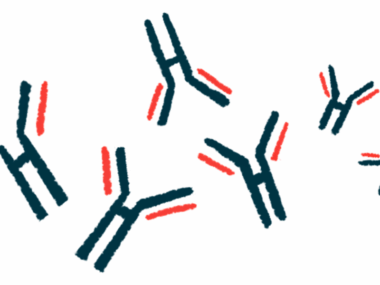Combined therapy found superior to plasma exchange in severe MG
Better outcomes, fewer treatments seen with lymphoplasmapheresis in study
Written by |
A new therapy that combines plasmapheresis, or plasma exchange, with the removal of certain immune cells from a person’s blood was seen to result in better outcomes among people with severe myasthenia gravis (MG) than were found when using just plasmapheresis, according to a new study.
The benefits of the new therapy, called lymphoplasmapheresis, or LPE for short, were observed even with fewer treatment rounds, further supporting its therapeutic potential for severe MG, the researchers noted.
“In severe MG, LPE may be a more preferred treatment option than PE [plasma exchange],” the scientists wrote, adding, “This study provides further evidence to support the application of LPE as a new treatment option for MG.”
The study, “Lymphoplasmapheresis versus plasma exchange in severe myasthenia gravis: a retrospective cohort study,” was published in Frontiers in Neurology by a team of researchers in China.
Testing a new plasma exchange-based therapy in severe MG
MG is driven by self-reactive antibodies that ultimately impair nerve-muscle communication, resulting in muscle weakness and fatigue. There is no cure for MG, but treatments are available that can help keep its symptoms under control.
Plasmapheresis, commonly known as plasma exchange, or PE for short, is a blood-cleaning procedure used as a first-line therapy option for people with severe MG.
In this procedure, a patient’s blood is passed through a machine to separate the plasma — the liquid portion of blood that contains water, salts, and proteins such as antibodies — from blood cells. The blood cells are then mixed with a healthy, substitute plasma and returned to the patient.
By removing self-reactive antibodies from the blood, this therapy has the potential to ease MG symptoms.
LPE combines plasmapheresis with leukapheresis, a procedure that involves removing specific immune cells called lymphocytes from a patient’s blood. Removing lymphocytes, including antibody-producing B-cells that may be overactive in MG, may further help in treating the disease.
While the team of researchers had previously shown that LPE safely and effectively eased symptoms of acute exacerbation in MG patients, whether it is superior to plasma exchange therapy alone remains unclear.
To address this, the same team looked back at the medical records of 198 severe MG patients who had undergone plasma exchange (75 patients) or lymphoplasmapheresis (123 patients) at three Chinese hospitals from November 2016 to January 2022.
The patients in both groups had similar ages — a mean of 46.6 versus 45.2 — and there was a like proportion of women (72% vs. 61.8%) in each. The two groups also had similar numbers of patients (92% vs. 89.4%) testing positive for antibodies against acetylcholine receptor or AChR, the most common MG-driving self-reactive antibodies.
Among patients also on an oral immunosuppressive therapy regimen, a significantly greater proportion of those in the plasmapheresis group received prednisone (24% vs. 7.3%).
In turn, significantly more patients receiving LPE also were treated with a combination of prednisone and Prograf (tacrolimus) — specifically, 71.5% versus 54.7%. This “was considered to be related to clinical medication preferences in different centers,” the team wrote.
Lymphoplasmapheresis seen to perform better in study
To ensure a fair comparison between the groups, the researchers used a technique called propensity score matching to match patients as much as possible on several demographic and clinical features. A total of 62 pairs of patients were successfully matched and further analyzed.
Efficacy was mainly assessed by changes in the Quantitative Myasthenia Gravis (QMG) score, a measure of disease severity in which higher scores indicate more severe disease. Patients had similar scores before treatment, and a decrease of three points or more after treatment was considered significant.
Results showed that patients in the plasmapheresis group underwent an average of two additional treatment rounds relative to those in the lymphoplasmapheresis group (3.74 vs. 1.89).
Despite this, mean QMG scores dropped significantly more in the LPE group than in the PE group — by 6.26 versus 4.68 points. In addition, more patients on LPE experienced a score reduction of three or more points (79% vs. 67.7%).
The mean length of hospital stay in the LPE group also was shorter than that of patients treated with PE (10.9 vs. 12.1), “but the difference was not statistically significant,” the team wrote.
Both procedures were effective in reducing the levels of the inflammatory molecules TNF-alpha, IL-1beta, and IL-6. However, LPE was better than plasma exchange in reducing the levels of anti-AChR antibodies.
These findings suggest that both approaches “can effectively improve the symptoms of patients, but LPE performed better,” the researchers wrote.
[Lymphoplasmapheresis] may be a better treatment option than [plasma exchange] for patients with severe MG, offering advantages in terms of efficacy while requiring fewer replacements.
Available follow-up data for up to two months after treatment suggested LPE provided better outcomes for patients, with mean QMG scores being consistently lower across all evaluated timepoints and relapses occurring less frequently (4.1% vs. 6.8%).
While these group differences failed to reach statistical significance, “these results suggest that LPE may be associated with better functional outcomes in patients during follow-up,” the researchers wrote.
Both therapies were generally well tolerated, with no reports of serious adverse events. The most frequent adverse events in both groups were allergy and a reaction to citrate, a chemical added to the blood to prevent it from clotting.
Overall, these findings suggest that “LPE may be a better treatment option than PE for patients with severe MG, offering advantages in terms of efficacy while requiring fewer replacements,” the researchers concluded.








Leave a comment
Fill in the required fields to post. Your email address will not be published.